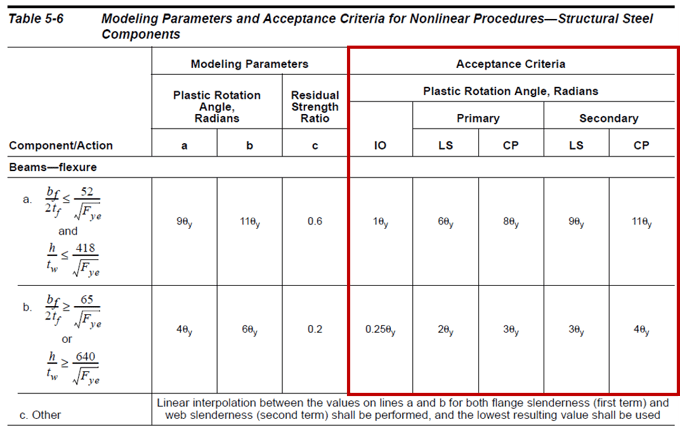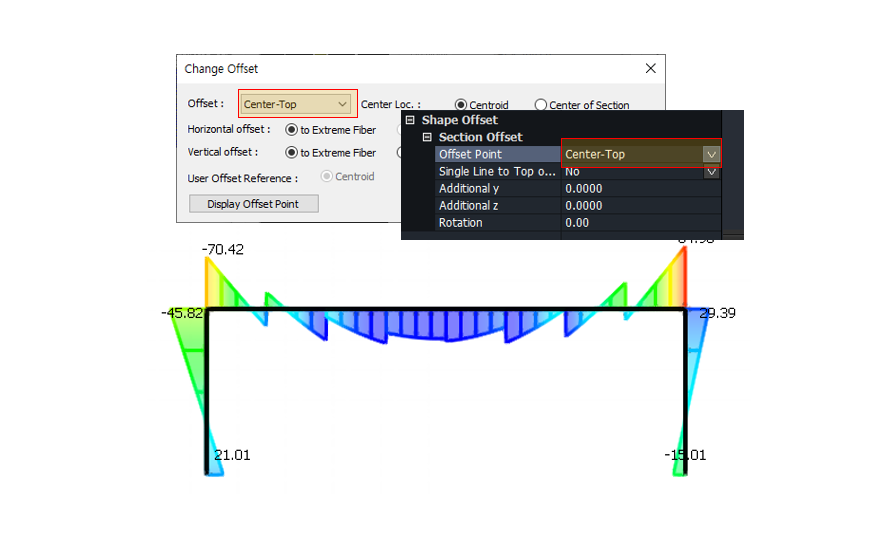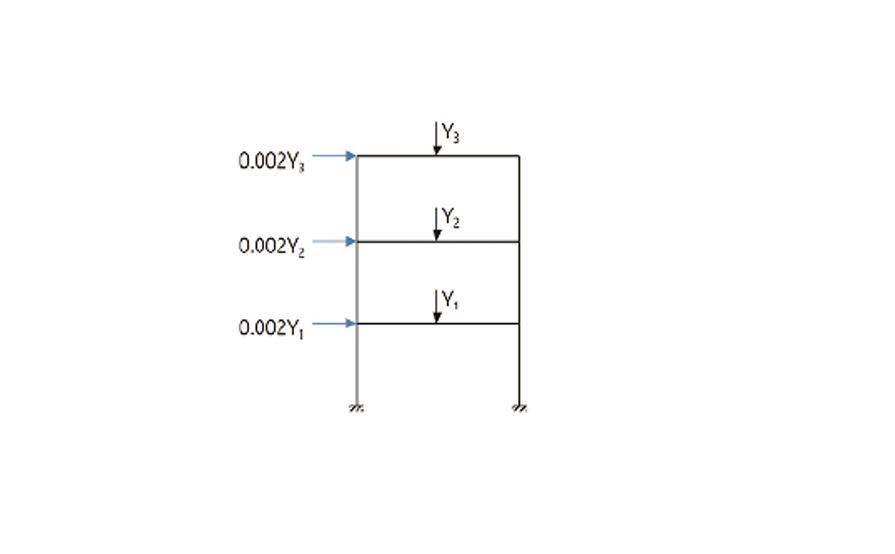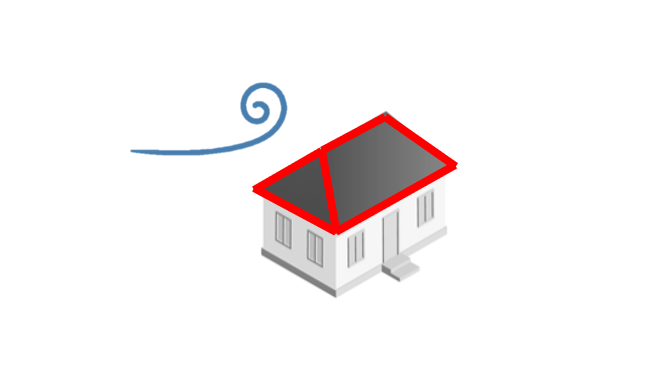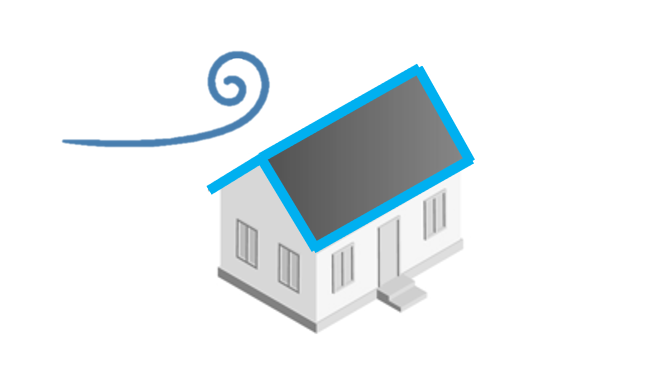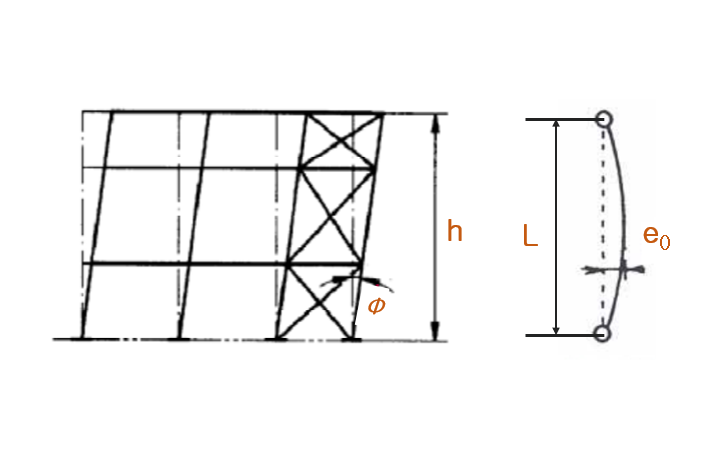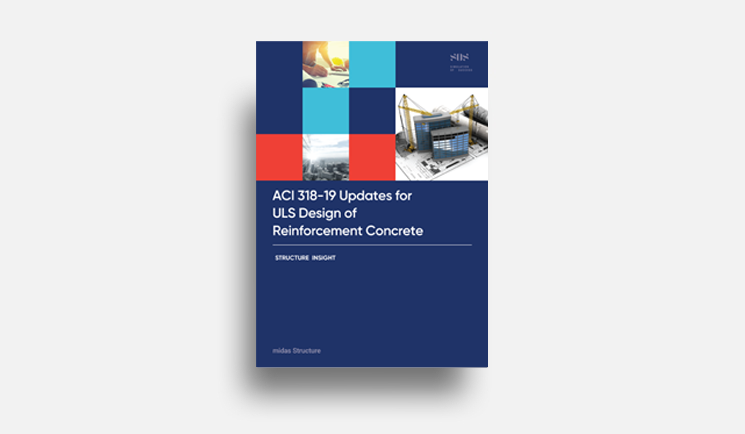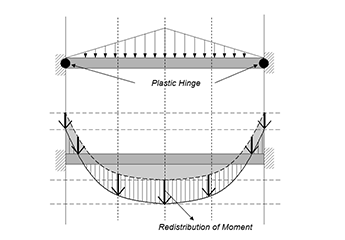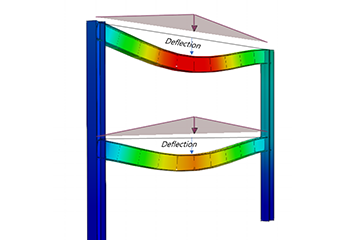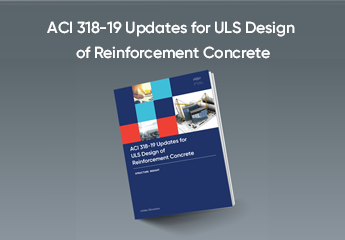What are Element Rotation and Hinge Rotation?
What is Element Rotation?
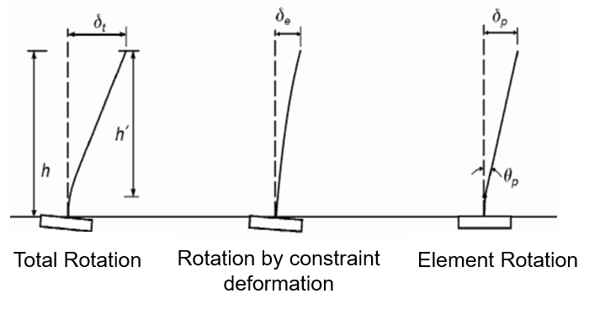
Element rotation means the angle caused according to the lateral deformation of the element.
However, the deformation by analysis includes the rotation value due to the deformation of the adjacent constraint as shown below.
Therefore, the element rotation can be calculated by removing the rotation by constrained deformation from the total rotation.
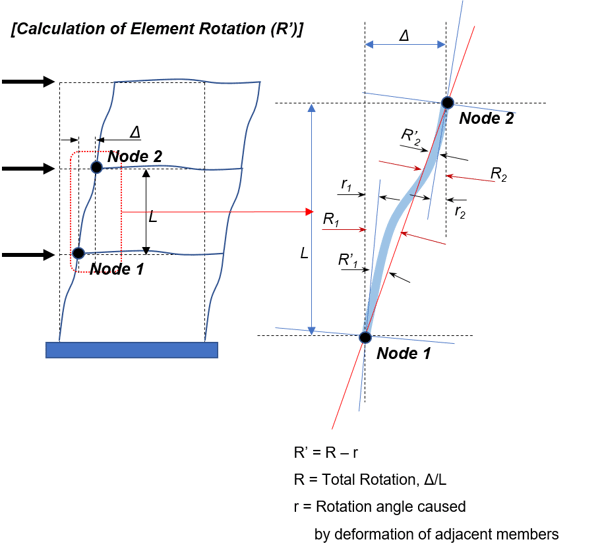 Figure 2. Calculation of Element Rotation
Figure 2. Calculation of Element Rotation
What is Hinge Rotation?
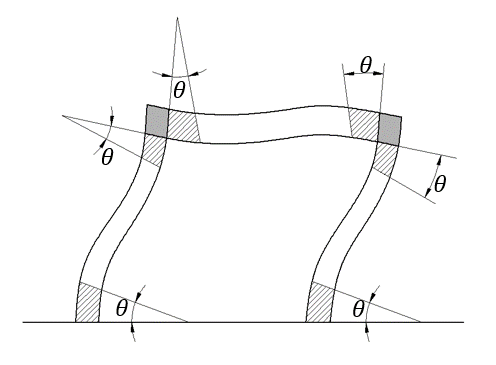
Hinge rotation means the curvature caused by the bending moment. It is usually considered where large moment occurs, and the hinges usually occur at the ends of the elements. Hinge rotation is calculated from the relationship between bending moment and stiffness of the element as shown on the right.
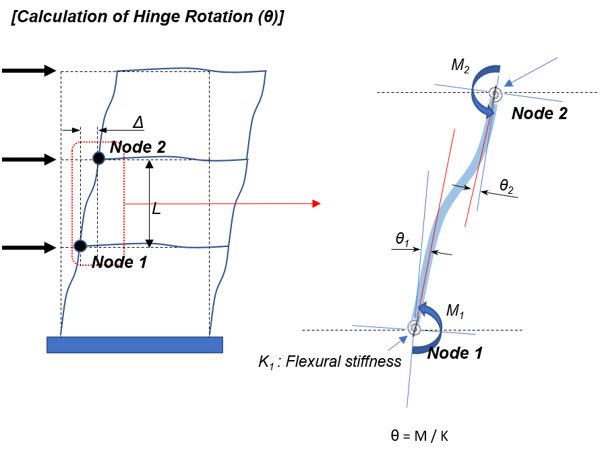 Figure 4. Calculation of Hinge Rotation
Figure 4. Calculation of Hinge Rotation
How to Calculate Element Rotation & Hinge Rotation in midas Gen
Example Model
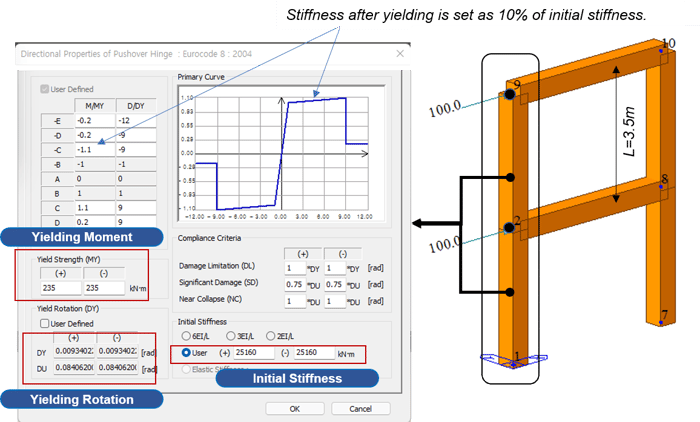
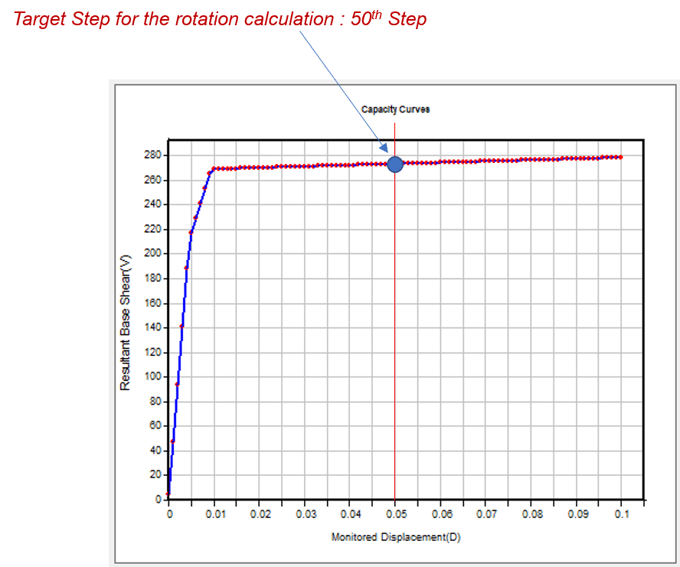
How to Calculate Element Rotation
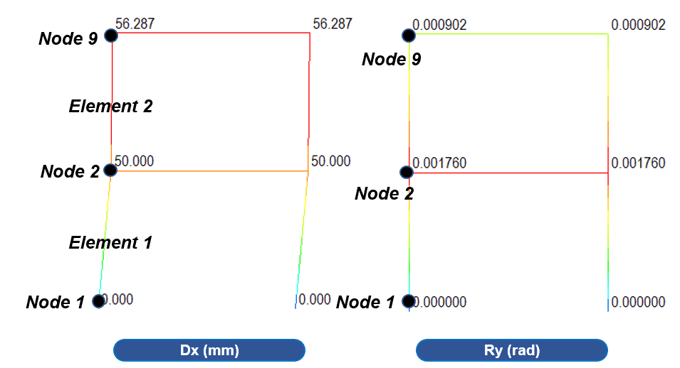
Calculation of Element Rotation
** Note.
There is a slight difference in the midas Gen because the rotation by shear deformation is also removed.
|
Location |
Lateral Displacement |
Rotation by Constraint |
|
|
Element No |
Node No |
Dx (mm) |
Ry (rad) |
|
1 |
1 |
0.000 (Dxi) |
0 |
|
2 |
50.000 (Dxj) |
0.001760 |
|
|
2 |
2 |
50.000 (Dxi) |
0.001760 |
|
9 |
56.287 (Dxj) |
0.000902 |
|
|
Location |
Element Rotation (rad) *(Dxi-Dxj)/Length - Ry |
|
|
Element No |
Node No |
|
|
1 |
1 |
(50-0)/3500 – 0 = 0.0142857 |
|
2 |
(50-0)/3500 – 0.001760 = 0.0125257 |
|
|
2 |
2 |
(56-50)/3500 – 0.001760 = 0.0000363 |
|
9 |
(56-50)/3500 – 0.000902 = 0.0008943 |
|
How to Calculate Hinge Rotation
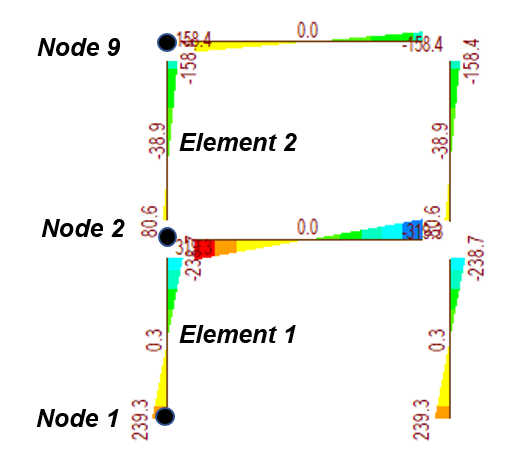 Figure 8. Moment at 50th Step
Figure 8. Moment at 50th Step
|
Location |
Moment at 50th step (Mu) |
Yielding Moment (My) |
Hinge Rotation (rad) |
|||||
|
Element No |
Node No |
|||||||
|
Initial Stiffness (Ki) |
Stiffness after yielding (0.1*Ki) |
Elastic (θe) |
Plastic (θp) |
Total (θt = θe+θp) |
||||
|
1 |
1 |
239.3 |
235 |
25160 |
2516 |
0.009340 |
0.001709 |
0.011049 |
|
2 |
238.7 |
235 |
25160 |
2516 |
0.009340 |
0.001471 |
0.010811 |
|
|
2 |
2 |
50.6 |
235 |
25160 |
2516 |
0.002011 |
0 |
0.002011 |
|
9 |
158.4 |
235 |
25160 |
2516 |
0.006296 |
0 |
0.006296 |
|
- Elastic Hinge Rotation (θe) = Min(Mu, My) / Ki
- Plastic Hinge Rotation (θp) = Max(0, Mu – My) / 0.1*Ki
- Total Hinge Rotation = θe + θp
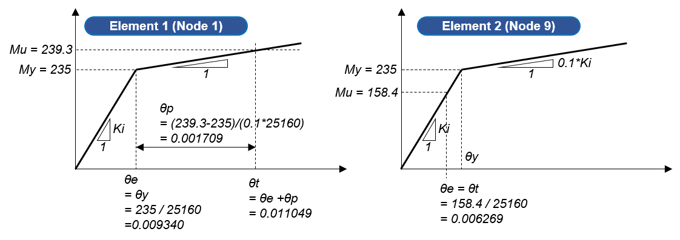 Figure 9. Element 1 & 2 Model
Figure 9. Element 1 & 2 Model
Where are Element Rotation and Hinge Rotation Used?
Element Rotation - Eurocode 8-3 A.3.
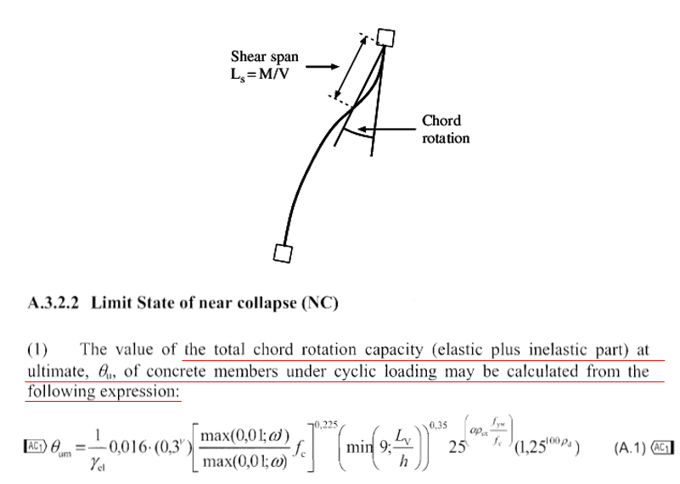
Element Rotation - FEMA 356 C1.5.1
Check ‘Structural Performance Level and Damage’ as per EC8-3 A.3.
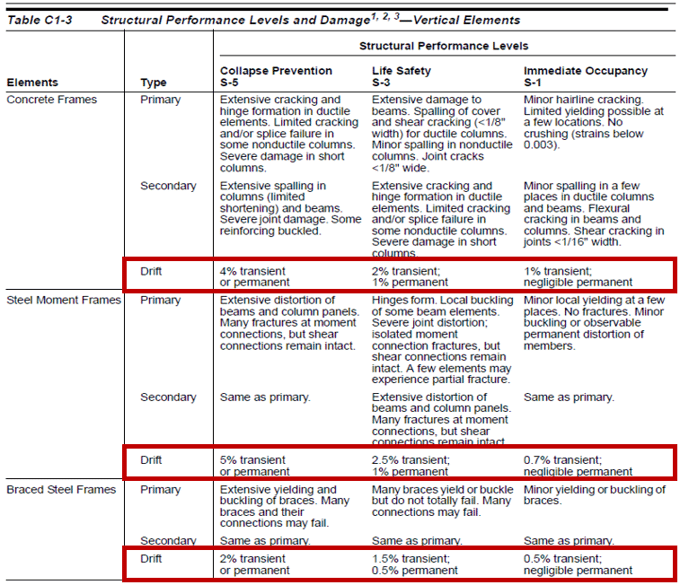 Figure 11. Structural Performance Levels and Damage
Figure 11. Structural Performance Levels and Damage
Hinge Rotation - FEMA 356 C1.5.1
Check ‘Analysis Result’ & ‘Acceptance Criteria’ as per FEMA 356.
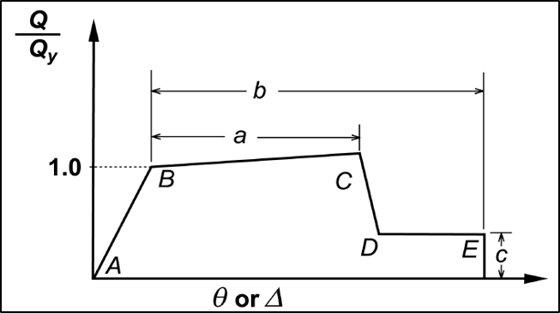 Figure 12. Hinge Rotation Analysis Model
Figure 12. Hinge Rotation Analysis Model
